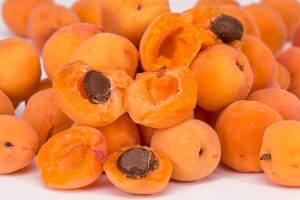Introduction
A protein pump is a type of protein that plays a crucial role in the transportation of ions or molecules across cell membranes. These pumps are essential for maintaining the proper balance of ions and molecules within cells and are involved in various physiological processes. In this article, we will explore the structure and function of protein pumps, their significance in cellular processes, and examples of protein pumps found in living organisms.
Structure and Function of Protein Pumps
Protein pumps are integral membrane proteins that span the lipid bilayer of cell membranes. They consist of multiple subunits that work together to create a channel or pore through which ions or molecules can pass. The structure of protein pumps can vary depending on the specific type and function of the pump.
The primary function of protein pumps is to actively transport ions or molecules across the cell membrane against their concentration gradient. This process requires the expenditure of energy, usually in the form of ATP (adenosine triphosphate). By utilizing ATP, protein pumps can move substances from areas of low concentration to areas of high concentration, thereby maintaining concentration gradients and facilitating various cellular processes.
Significance in Cellular Processes
Protein pumps are involved in a wide range of cellular processes and are crucial for maintaining cellular homeostasis. One of the most well-known protein pumps is the sodium-potassium pump, which is found in the plasma membrane of animal cells. This pump actively transports sodium ions out of the cell and potassium ions into the cell, contributing to the generation of electrical impulses in nerve cells and the maintenance of proper cell volume.
Another important protein pump is the proton pump, found in the inner membrane of mitochondria. This pump plays a vital role in the production of ATP through oxidative phosphorylation. By pumping protons across the inner membrane, the proton pump creates an electrochemical gradient that drives the synthesis of ATP by ATP synthase.
Protein pumps are also involved in the transport of various molecules across cell membranes. For example, the glucose transporter protein pumps glucose molecules into cells, allowing them to be used as an energy source. Additionally, protein pumps are responsible for the uptake of essential nutrients, such as amino acids and vitamins, into cells.
Examples of Protein Pumps
There are numerous examples of protein pumps found in living organisms. Some of the well-known protein pumps include:
1. Sodium-Potassium Pump: As mentioned earlier, this pump transports sodium ions out of the cell and potassium ions into the cell, contributing to the generation of electrical impulses in nerve cells.
2. Calcium Pump: This pump actively transports calcium ions across cell membranes, playing a crucial role in muscle contraction, neurotransmitter release, and other cellular processes.
3. Proton Pump: Found in the inner membrane of mitochondria, this pump is involved in ATP production through oxidative phosphorylation.
4. ATPase Pump: This pump hydrolyzes ATP to ADP and inorganic phosphate, releasing energy that can be used for various cellular processes, including ion transport.
Conclusion
Protein pumps are essential components of cell membranes that play a crucial role in maintaining cellular homeostasis. They actively transport ions and molecules across cell membranes, contributing to various physiological processes. Understanding the structure and function of protein pumps provides insights into the intricate mechanisms that govern cellular activities.
References
1. Alberts, B., Johnson, A., Lewis, J., Raff, M., Roberts, K., & Walter, P. (2002). Molecular Biology of the Cell. Garland Science.
2. Nelson, D. L., Cox, M. M. (2008). Lehninger Principles of Biochemistry. W.H. Freeman and Company.
3. Lodish, H., Berk, A., Zipursky, S. L., Matsudaira, P., Baltimore, D., & Darnell, J. (2000). Molecular Cell Biology. W. H. Freeman and Company.











